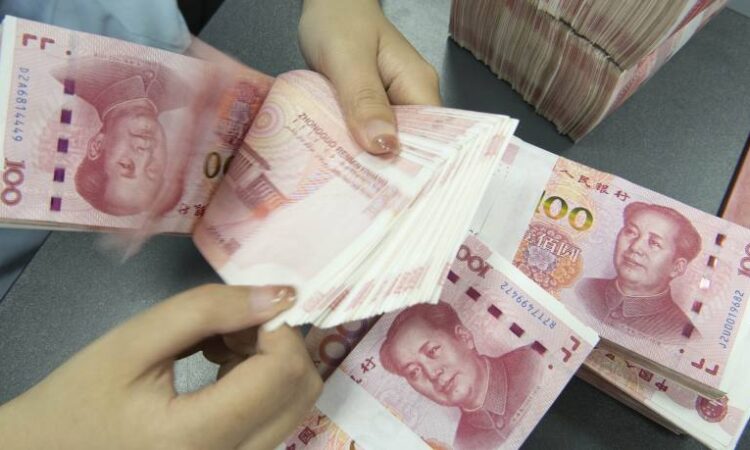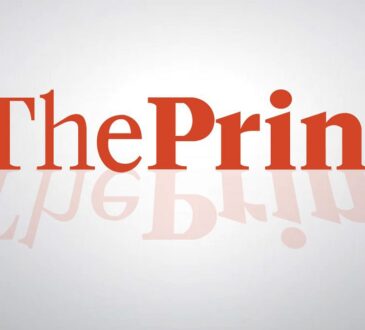
Sanctions on Russia have resulted in a marked increase in the attractiveness of China’s renminbi for certain international trade transactions, chiming with Beijing’s efforts to increase the currency’s usage at the US dollar’s expense.
Rising geopolitical tensions have resulted in growing volumes of trade within blocs of “geographically aligned countries”, according to the European Bank for Reconstruction and Development’s latest regional economic prospects report, with emerging market currencies becoming “more commonly used” in trade transactions traditionally dominated by the dollar.
In 2016, 10 per cent of Chinese exports to Russia were in renminbi. By the end of 2022, it was 66 per cent, according to data released by the EBRD.
“Sanctions made it costly to process transactions in western currencies,” the EBRD’s chief economist Beata Javorcik told The Banker on the sidelines of the EBRD’s annual meeting in Yerevan, Armenia.
“This increased the attractiveness of trading in alternative currencies, including the renminbi.”
“Third countries” outside the EU are using renminbi as the currency of invoicing, which ties into the discussion among the Brics countries — Brazil, Russia, India, China, South Africa — of using alternative currencies for trade, said Javorcik.
According to the EBRD’s latest analysis of Russian imports, the renminbi has increased its share in Russia’s overall trade almost tenfold, from 3.5 per cent in 2021 to 32.7 per cent in 2023. Among vehicle currencies used for Russian imports, the renminbi’s share has increased from 0.6 per cent in 2021 to 9.7 per cent in 2023.
Javorcik says that sanctions have “sent chills down the spines of countries not aligned with the west”, which has increased the attractiveness of alternative currencies to the dollar.
The cost and difficulties of processing transactions in dollars are also reasons for the increasing use of renminbi in trade, she adds. “When you increase the cost of using one currency, you boost the relative attractiveness of alternatives. Because of the Russian situation, the rouble is not attractive. In that sense, sanctions have increased the attractiveness of the renminbi.”
The EBRD’s latest regional economic prospects report also points to shifts in trade patterns caused by Russian sanctions, with trade between EU-EBRD economies and Russia and the UK declining substantially in 2022-2023 relative to 2018-2021.
However, “intra-regional” trade between EU-EBRD economies has increased significantly. One of the biggest shifts in trade patterns has been the growth in “intermediated” trade via the Caucasus and central Asia. However, in recent months this trade has “stabilised at high levels”, according to the EBRD’s latest prospects report.
The Caucasus and central Asia received major inflows of money, businesses and people from Russia. “More than 1mn individuals, including highly skilled professionals, are estimated to have left Russia in the past two years (estimates of emigration vary considerably),” the EBRD’s report states. “Many chose to relocate to the Caucasus and central Asia, taking advantage of linguistic and cultural proximity and the relative ease of gaining residence and opening bank accounts.”
Armenia, Georgia and the Kyrgyz Republic, which received most of the Russian immigrants relative to their populations, saw banking deposits grow by approximately 60-70 per cent, according to the EBRD’s report, relative to the 2021 average. However, with Russian migrants returning home or moving to third countries, deposits have started to decline.
Geopolitical fragmentation of trade has also coincided with notable shifts in foreign direct investment patterns, the report noted, with increasing investment in “bridging” economies that maintain close trade ties with rival blocs of economies.
“Inward FDI from China to the EBRD regions picked up sharply in 2023, with particularly large announcements in Egypt, Morocco and Serbia, in sectors such as electronics, metals and renewables,” the report stated. In the case of Morocco, the report said China’s interest in trading with the country may partly reflect its free trade agreement with the US, which “affords favourable treatment under the Inflation Reduction Act”, which heavily subsidises industries involved in the green energy transition.
FDI from Russia to central Asia also increased sharply in 2023, the report noted, driven by logistics services which complement increased levels of intermediated trade. “There was an influx of Russian capital into logistics and non-store retail firms that intermediate trade,” said Javorcik.

